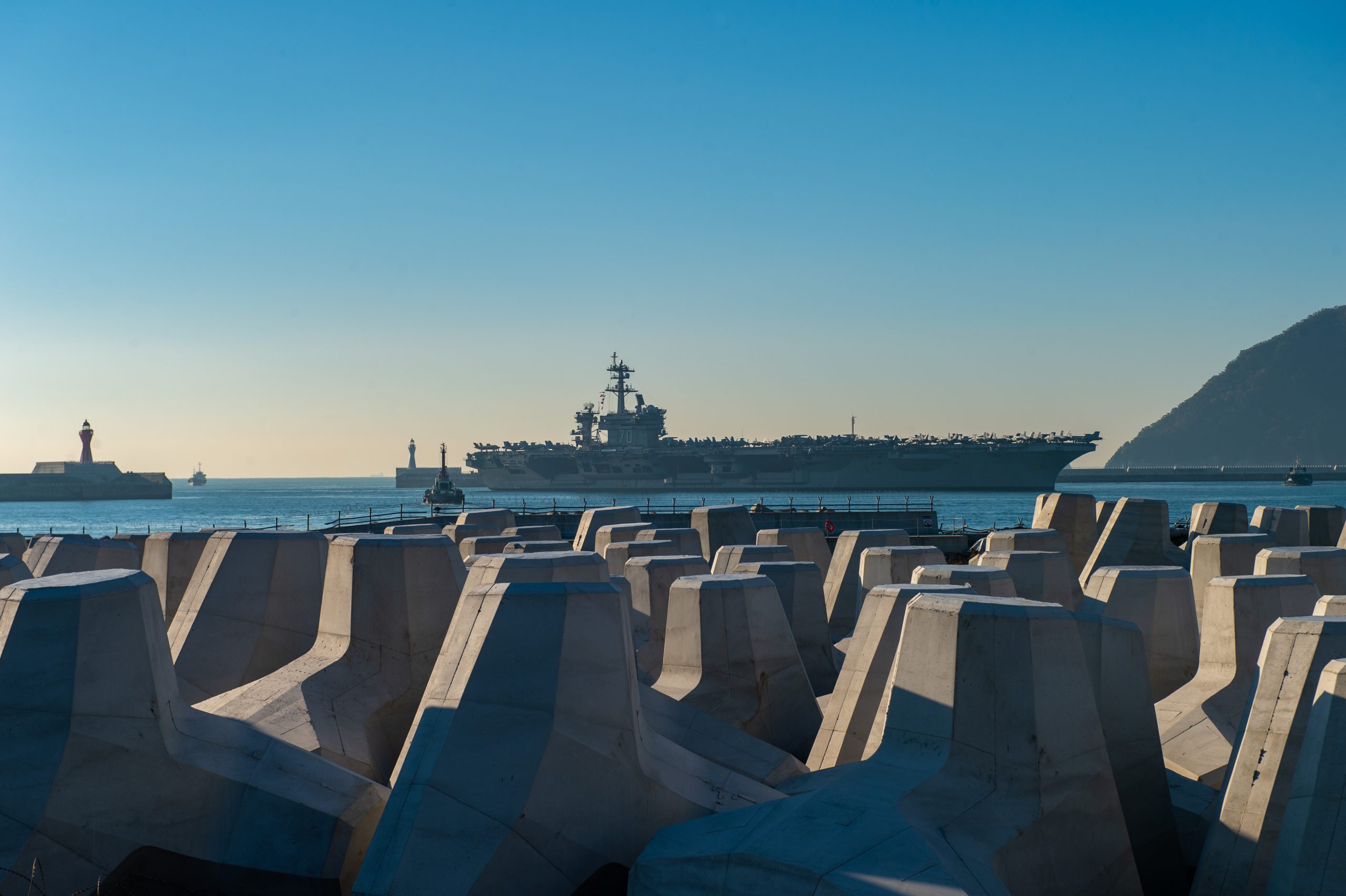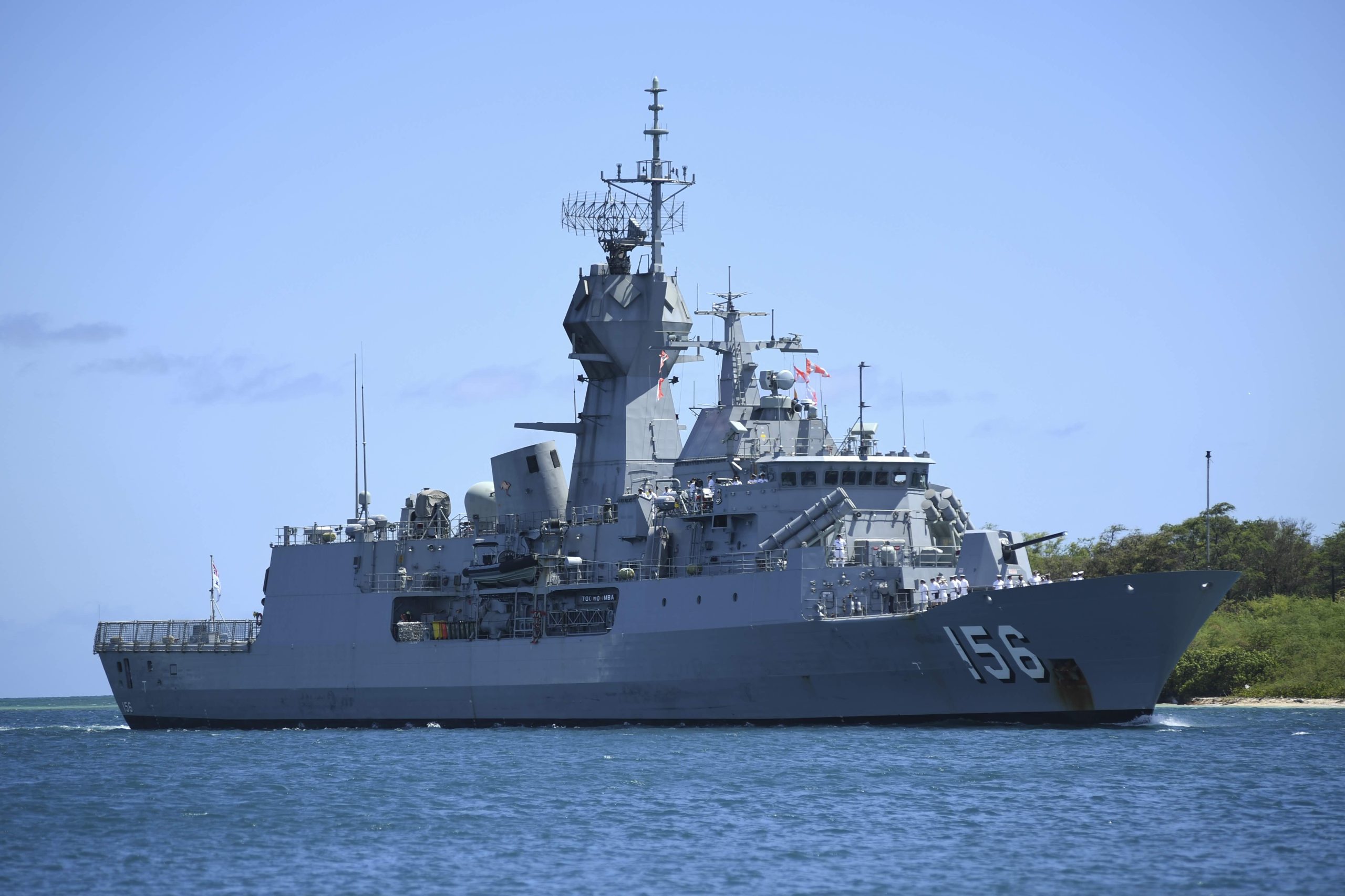
VA - Aircraft carrier USS Carl Vinson (CVN-70) docked in Busan, Republic of Korea on Tuesday after wrapping its participation in the Japan Maritime Self Defense Force Annual Exercise (ANNUALEX) while on Sunday, carrier USS Ronald Reagan (CVN-76) returned to its homeport in Yokosuka, marking its last scheduled deployment as the forwarded deployed carrier in Japan.
Meanwhile, China’s Ministry of National Defense has pushed back against Australia’s claim that a People’s Liberation Army Navy destroyer employed its sonar against Australian navy divers.
A Tuesday Navy release only mentioned Vinson docking into Busan but along with Vinson, CSG-1 includes USS Princeton (CG-59) and destroyers USS Hopper (DDG-70), USS Kidd (DDG-100), USS Sterett (DDG-104) and USS William P. Lawrence (DDG-110).
“An aircraft carrier port visit demonstrates the United States’ commitment to the alliance between the U.S. and the Republic of Korea,” said Rear Adm. Carlos Sardiello, commander, CSG-1 in the statement.
“Cooperation between the U.S. and Republic of Korea navies is critical to maintaining peace and security in Northeast Asia and the Korean Peninsula”.
Vinson is the third carrier to visit Korea this year, following USS Nimitz (CVN-68) in March and Reagan in October. In April, Washington and Seoul agreed to have more visible U.S strategic asset deployments to South Korea.
“The U.S. Carrier Strike Group 1’s visit demonstrates the South Korea-U.S. alliance’s strong combined defense posture and firm resolve to respond to advancing North Korean nuclear and missile threats,” Rear Adm. Kim Ji-hoon, director of the maritime operations center at the ROK Fleet said in a statement.
Vinson’s arrival in Busan came the same day North Korea informed the Japan Coast Guard that Pyongyang intended to launch a satellite between now and Dec.1. The JCG issued a notice informing of a potential landing in the Yellow Sea, East China Sea and east of Luzon. North Korea has twice failed to launch a military reconnaissance satellite this year though its third attempt is expected to have been bolstered by Russian technical assistance following the meeting in in Russia in September between North Korean leader Kim Jong Un and Russian President Vladimir Putin.
On Monday, Vinson wrapped up its participation in the JMSDF ANNUALEX that took place in the Philippine Sea and began on Nov. 10. The exercise included naval and air assets of Australia and Canada while the Philippine Navy participated as observers. Along with Vinson and its embarked Carrier Air Wing (CVW) 2, the U.S. sent attack boat USS Jefferson City (SSN-759), cruiser Princeton , destroyers Hopper and Sterett, fleet oiler USNS Tippecanoe (T-AO-199) and motor tanker ship MT SLNC Goodwill (T-AOT-5419) to the exercise. Royal Australian Navy sent destroyer HMAS Brisbane (DDG-41) and fleet oiler HMAS Stalwart (A304) and a Royal Australian Air Force (RAAF) P-8 Poseidon Maritime Patrol Aircraft (MPA) while Canada was represented by frigates HMCS Vancouver (FFH331) and HMCS Ottawa (FFH341) and tanker MV Asterix along with a Royal Canadian Air Force (RCAF) CP-140 MPA. The RAN ships, together with HMAS Toowoomba (FFH156) and the RCN ships have been operating in both South East Asia and North East Asia as part of their respective countries’ regional presence deployments to the region.
On Sunday carrier Ronald Reagan returned to returned to its forward-deployed port in Yokosuka, Japan, following a six-month deployment in the Indo-Pacific region stated a navy release. The Navy counted the deployment period as spanning early May to late November though Reagan docked into its homeport of Yokosuka on Aug. 25 for a mid-deployment maintenance period and departed on Sept. 29 after cancelling its departure six times. The release said the patrol was its final full deployment as America’s forward-deployed aircraft carrier.
“In their hard work and professionalism throughout this deployment, Ronald Reagan sailors have stood firm behind our partners and allies,” said Capt. Daryle Cardone, commanding officer of Reagan in the release, “Our mission of maintaining a free and open Indo-Pacific is enabled by the trust we continue to build through exercises at sea and cultural exchanges ashore.”
Reagan is expected to return soon to the United States for scheduled maintenance with carrier USS George Washington (CVN-73) which previously served as the forward-deployed carrier in Japan replacing Reagan. The Navy announced the exchange on Apr. 28 saying Washington would return in 2024 but gave no specific date. In his speech to the carrier crew while visiting Washington on Oct. 11, Yokosuka Mayor Katsuaki Kamiji said that he had heard that the carrier would arrive in Yokosuka in the second half of next year.

On Monday, China Ministry of National Defense spokesperson, Snr Col Wu Qian issued a response to Australia’s statement that PLAN destroyer CNS Ningbo (139) used its hull-mounted sonar while divers from Australian frigate Toowoomba were in the water while both ships were in the waters of Japan’s Economic Exclusion Zone. Wu stated that Australia’s remarks were completely inconsistent with the facts and that China firmly opposes it and has lodged stern representations with Australia. He added that the Australian frigate had been operating in the waters near the East China Sea, and that Ningbo has was undertaking tracking, surveillance, identification and verification and other measures in accordance with laws and regulations.
“During this period, the Chinese ships strictly abided by international rules such as the “Regulations for Unexpected Encounters at Sea” and the “International Regulations for Preventing Collisions at Sea”, maintained a safe distance from the Australian ships, and did not conduct any activities that might affect the Australian diving operations” said Wu who also said China and Japan have no delimitation in the relevant sea areas, and there was no argument that China’s military activities are located in or enter Japan’s exclusive economic zone.
“We urge Australia to respect the facts, stop making reckless and irresponsible accusations against China, do more things that are conducive to enhancing mutual trust between the two sides, and create a positive atmosphere for the better development of relations between the two countries and their militaries” concluded Wu.





